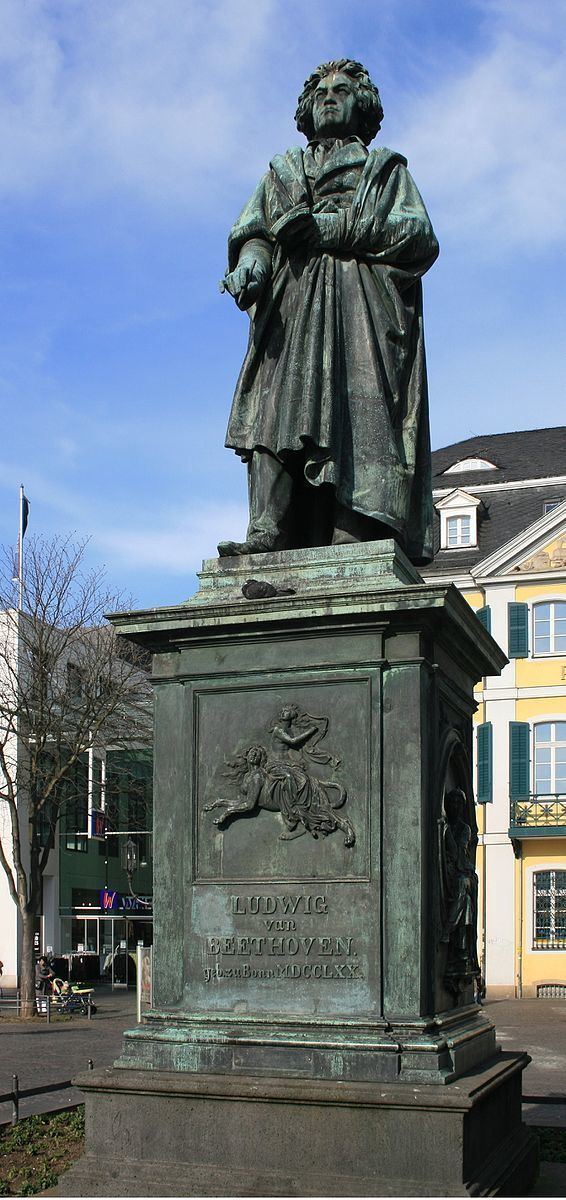 | ||
The Fantasie in C major, Op. 17, was written by Robert Schumann in 1836. It was revised prior to publication in 1839, when it was dedicated to Franz Liszt. It is generally described as one of Schumann's greatest works for solo piano, and is one of the central works of the early Romantic period. It is often called by the Italian version, Fantasia; the word "Fantasie" is the German spelling.
Contents
Structure
The Fantasie is in loose sonata form. Its three movements are headed:
The first movement is rhapsodic and passionate; the middle movement (in E-flat major) is a grandiose rondo based on a majestic march, with episodes that recall the emotion of the first movement; and the finale is slow and meditative.
Genesis
The piece has its origin in early 1836, when Schumann composed a piece entitled Ruines expressing his distress at being parted from his beloved Clara Wieck (later to become his wife). This later became the first movement of the Fantasy. Later that year, he wrote two more movements to create a work intended as a contribution to the appeal for funds to erect a monument to Beethoven in his birthplace, Bonn. Schumann offered the work to the publisher Kirstner, suggesting that 100 presentation copies could be sold to raise money for the monument. Other contributions to the Beethoven monument fund included Mendelssohn's Variations sérieuses.
The original title of Schumann's work was "Obolen auf Beethovens Monument: Ruinen, Trophaen, Palmen, Grosse Sonate f.d. Piano f. Für Beethovens Denkmal". Kirstner refused, and Schumann tried offering the piece to Haslinger in January 1837. When Haslinger also refused, he offered it to Breitkopf & Härtel in May 1837. The movements' subtitles (Ruins, Trophies, Palms) became Ruins, Triumphal Arch, and Constellation, and were then removed altogether before Breitkopf & Härtel eventually issued the Fantasie in May 1839. It was printed with a dedication to Franz Liszt.
The Beethoven monument was eventually completed, due mainly to the efforts of Liszt, who paid 2,666 thaler, the largest single contribution. It was unveiled in grand style in 1845, the attendees including Queen Victoria and Prince Albert, and many other dignitaries and composers, but not Schumann, who was ill.
Allusion and quotation
Schumann prefaced the work with a quote from Friedrich Schlegel:
Durch alle Töne tönetIm bunten ErdentraumEin leiser Ton gezogenFür den, der heimlich lauschet.("Resounding through all the notes/In the earth's colorful dream/There sounds a faint long-drawn note/For the one who listens in secret.")
The musical quotation of a phrase from Beethoven's song cycle An die ferne Geliebte in the coda of the first movement was not acknowledged by Schumann, and apparently was not spotted until 1910. The text of the passage quoted is: Accept then these songs [beloved, which I sang for you alone]. Both the Schlegel stanza and the Beethoven quotation are appropriate to Schumann's current situation of separation from Clara Wieck. Schumann wrote to Clara: The first movement may well be the most passionate I have ever composed – a deep lament for you. They still had many tribulations to suffer before they finally married four years later.
Reception and performance
Liszt was one of the few pianists capable of meeting the then-unparalleled demands of the Fantasie, particularly the second movement coda's rapid skips in opposite directions simultaneously. He had played the piece to Schumann privately, and later incorporated it into his teaching repertory, but he considered it unsuitable for public performance and never played it in public. However, Liszt returned the honour by dedicating his own Sonata in B minor to Schumann in 1853. Clara Schumann did not start to perform the Fantasie in her concerts until 1866, ten years after the composer died.
The Fantasie has been recorded many times, including versions by Martha Argerich, Claudio Arrau, Wilhelm Backhaus, Daniel Barenboim, Alfred Brendel, Clifford Curzon, Sándor Falvai, Edwin Fischer, Nelson Freire, Vladimir Horowitz, Wilhelm Kempff, Alicia de Larrocha, Murray Perahia, Maurizio Pollini, Sviatoslav Richter, Burkard Schliessmann, Mitsuko Uchida, Lars Vogt and Vladimir Sofronitsky. Recent recordings have been made by Stephen Hough and Marc-André Hamelin.
It has been orchestrated by Nathan Kelly for standard symphonic orchestra and is frequently performed.
